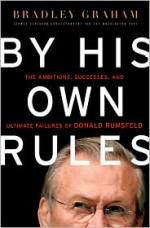Iran Declares Ahmadinejad Victor
President Mahmoud Ahmadinejad won Iran's presidential election in a landslide, officials of Iran's election commission said Saturday morning. But his main rival, Mir Hussein Moussavi, had already announced defiantly just two hours after the polls closed on Friday night that he had won and charged that there had been voting irregularities."
I am the absolute winner of the election by a very large margin," Mr. Moussavi said during a news conference with reporters just after 11 p.m. Friday, adding: It is our duty to defend people's votes. There is no turning back."
More at The New York Times.
Iran Election In Dispute as 2 Candidates Claim Victory - Thomas Erdbrink, Washington Post.
A pivotal presidential election in Iran ended in confusion and confrontation early Saturday as both sides claimed victory and plainclothes officers fired tear gas to disperse a cheering crowd outside the campaign headquarters of opposition candidate Mir Hossein Mousavi.
With votes still being counted in many cities, President Mahmoud Ahmadinejad was leading by a 2-1 ratio in early returns, according to Iranian Interior Ministry officials. But Mousavi's supporters dismissed those numbers, saying the ministry was effectively under Ahmadinejad's control.
"I am the winner of these elections," Mousavi declared late Friday, after heavy turnout resulted in a two-hour extension of voting across the Islamic republic. "The people have voted for me."
More at The Washington Post.
Ahmadinejad Takes Big Lead, Opposition Media Wing Shut - Farnaz Fassihi and Roshanak Taghavi, Wall Street Journal.
Iranian state media reported a big lead in election results for President Mahmoud Ahmadinejad Saturday morning, but by noon hadn't yet released a final, official tally.
Meanwhile, campaign officials for his top challenger, Mir Hossein Mousavi, said the communications wing of their candidate's election operation had been shut down early Saturday by court order. Eye witnesses reported violence around Mr. Mousavi's campaign headquarters and the interior ministry, saying riot police were beating some people near the buildings. It was unclear how extensive the violence was and who the victims were.
Midmorning Saturday, Iran's interior ministry, responsible for running elections and counting ballots, had announced partial results showing Mr. Ahmadinejad as the projected winner of the race, with a landslide lead.
More at The Wall Street Journal.
Ahmadinejad Poised to Win Reelection in Iran - Borzou Daragahi and Ramin Mostaghim, Los Angeles Times.
President Mahmoud Ahmadinejad holds a decisive lead in his reelection bid, Iran's Interior Ministry said this morning, while his main rival claimed victory and alleged election irregularities.
Ministry officials said that with more than 75% of ballots counted, the incumbent had received nearly two-thirds of the vote. More than 46 million people were eligible to vote, officials said.
Official results are expected today, but news outlets loyal to the president claimed that he had scored a decisive victory over moderate Mir-Hossein Mousavi, who had received about a third of the votes counted. This morning, security forces shut down Mousavi's offices, his campaign said.
More at The Los Angeles Times.

